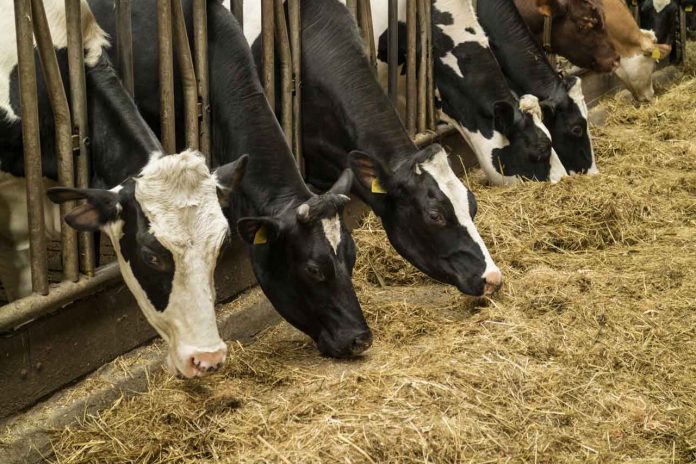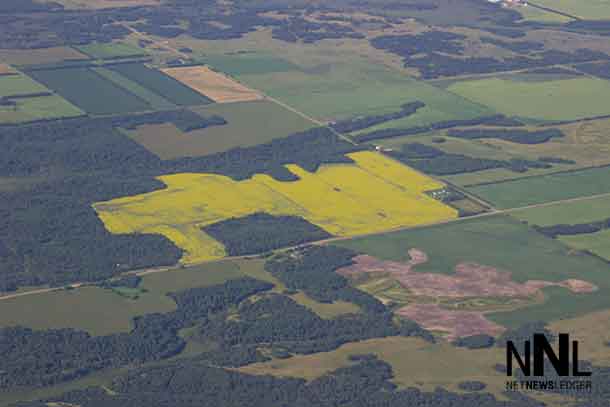In an 18-month research project to identify the types and amount of plastic packaging and products used in the agricultural sector across Canada, Cleanfarms has released a first-ever national benchmark report that documents how much of these plastic materials are generated by sector and by region across the country.
The report, Agricultural Plastic Characterization and Management on Canadian Farms, has been posted to cleanfarms.ca
This research provides in-depth figures that will help guide the ag sector as it explores how agricultural plastics packaging and products can contribute to Canada’s emerging circular economy.
“This data is available at an important time. There is considerable activity at the global level aimed at changing the ways that plastics are managed,” said Cleanfarms Executive Director Barry Friesen. “Closer to home, we can now measure our progress just as new initiatives are put in place that complement both established and high performing recycling programs and the ongoing commitment in the farming community to do even more.”
The research was funded in part by Environment and Climate Change Canada.
As Canada’s only agricultural industry stewardship organization, Cleanfarms actively contributes to a healthier environment and a sustainable future for Canadian agriculture by developing and operating programs across Canada specifically for farmers to help them manage plastic materials when they are no longer useful.
Cleanfarms currently operates a Canada-wide program that recovers empty 23L and smaller pesticide and fertilizer containers. The program has been in operation for 30 years. In 2020, 76% of the empty containers were recovered for recycling.
One of Cleanfarms’ newer programs that helps Saskatchewan farmers recycle grain bags has seen collection volumes increase substantially since this program was first offered. In 2018, Cleanfarms recovered 1,257 tonnes or grain bags. In 2020, Saskatchewan farmers doubled this, returning 2,536 tonnes of grain bags for recycling.
“Ag plastics like grain bags, bale and silage plastics and containers are central to modern agriculture. They allow for efficient storage and delivery of product on farm,” Friesen noted, adding that, “Our high recovery rate for container recycling, combined with substantial increases in grain bag volumes over a short timeframe demonstrate that farmers want to recycle. It is up to organizations like Cleanfarms to ensure that convenient, customized programs that respond to their needs are made available.”
The research estimates that Canadian farmers use nearly 62,000 tonnes of ag plastic products and packaging annually. More than half of that, about 53%, is generated in the Prairie provinces; Ontario and Quebec combined generate another 37%; BC accounts for about 7%, and the Maritimes produce the remainder at 3% [see Figure 1 below].
Different commodities and farming practices impact the types and amounts of ag plastics in use. Field crop production, which includes grain and oilseeds and growing hay and fodder for livestock account for 59% of the total amount generated annually in the form of grain bags, silage wrap, bale wrap, baler wrap and bunker covers. Vegetable production, whether in field or in greenhouses accounts for another 10% of the annual total and include items such as propagation trays and greenhouse films.
Plastic usage in other sectors and by province is detailed in the report.
“Cleanfarms currently collects about 6,000 tonnes of ag plastics annually through its existing programming. This figure is up from about 2,000 tonnes in 2015,” Friesen noted. “With support from Agriculture and Agri-Food Canada’s Canadian Agricultural Strategic Priorities Program program, Cleanfarms is launching six pilot projects that are designed to help recover a greater portion of essential, high volume ag plastics. We anticipate we’ll see the recovery numbers climb year over year,” Friesen said.
Research Study Recommendations
In the report, Cleanfarms noted that a national, multi-phased strategy is needed to enable industry to divert more plastics that can be recirculated in the Canadian economy, including:
- Increased outreach to inform farmers of the opportunities to use existing programs designed for them
- Develop best management practices through pilot projects to establish appropriate preparation procedures to ensure the plastics collected are recyclable, and to transition pilot projects to permanent programs
- Develop technologies that improve the quality of collected materials before they are delivered to end markets
- Develop and allow processes that incorporate used ag plastics in the manufacture of new products
- Provide support, as appropriate, to the development of extended producer responsibility policies to ensure a stable funding source to cover recycling programs and costs long term
“The fact that long-standing plastics management programs have been set up and operated voluntarily by the ag industry in Canada is a testament to how far this sector is ahead of the curve,” Friesen said. “Our efforts will continue to focus on expanding recycling in the ag sector to help farmers achieve their sustainability goals.”






